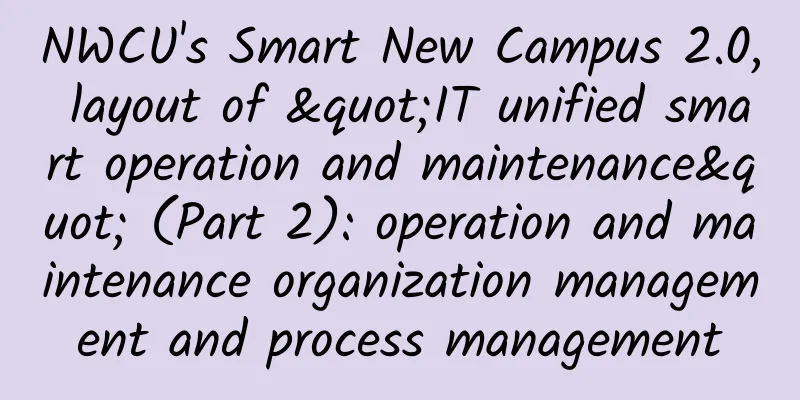In the 5G era, edge computing is used to accelerate the development of interconnected manufacturing

|
In recent years, 5G and the Internet of Things have continued to develop, smart terminal devices have become increasingly popular, and data on the edge of the network has exploded. These factors have greatly promoted the development of edge computing. For the industrial Internet, 5G edge computing technology can solve problems such as data latency, bandwidth, and security, and meet and accelerate overall construction needs. The manufacturing industry is also actively transforming towards intelligence and interconnection, and "interconnected manufacturing" has become a new turning point and historical opportunity in the development wave of manufacturing companies. However, with the development of intelligent manufacturing, more and more data types have emerged. According to a report by IDC, the growth rate of real-time data is 50% faster than that of static data, and the compound annual growth rate of streaming data analysis is expected to reach 28%. This makes traditional data platforms dedicated to static historical data solutions and running locally or in discrete clouds unable to meet the current needs of manufacturing companies for real-time analysis. The reason why streaming data has grown so rapidly is that it can achieve real-time analysis and, more importantly, autonomous decision-making. Factors that enable the transformation of traditional manufacturing to connected manufacturing include: economical process sensors tailored for specific purposes, powerful edge computing devices that can make repeatable autonomous decisions, cloud computing for analysis and storage, and upcoming 5G applications. 5G will open a data "highway" to free the manufacturing process from the constraints of connection lines; but these advantages of streaming data also make it more challenging to manage the huge amount of data in the business processes of various manufacturing companies, as well as the diverse data structures. Traditional connected manufacturing data management solutions face challenges With the rapid development of new data sources and the increase in data volume, many manufacturing companies are under pressure to address the complexity of digitalization. The main challenges facing enterprises in the management of connected manufacturing data include:
Cloudera DataFlow Gain Insights from the Edge Given the complexity and diversity of manufacturing and IoT data, manufacturing companies attach great importance to obtaining clear and visible insights from edge to artificial intelligence. Therefore, data should be placed in data lakes and enterprise data platforms from the beginning. Cloudera Data Platform addresses these challenges through a combination of technologies in Cloudera DataFlow (CDF). CDF provides the following solutions:
|
<<: 6 ways to remove duplicate URLs! (with detailed code)
>>: Why 5G networks require a new way of operating
Recommend
How much money has 5G burned? The accounts of the three major operators are all here
In 2020, the country's top leadership has cla...
Understand 3GPP 5G versions and the features of each version
While for years cellular technology has been prim...
China has built and put into operation more than 1.39 million 5G base stations
According to Zhongguancun Online, relevant person...
On-Prem vs. Colocation vs. Cloud vs. Edge: Pros and Cons
In today's digital economy, technology has be...
How edge computing, edge networking, and edge data management work together
Edge computing, edge networking, and edge data ma...
Justhost newly opened German data center, 200Mbps unlimited traffic starting from $3.4/month
Justhost opened a new German data center this mon...
Apple, Qualcomm, and Intel: 5G
Within 48 hours, Apple, Qualcomm, and Intel, thre...
MIIT releases three-year action plan for industrial internet
MIIT releases three-year action plan for industri...
GSA: 140 operators in 59 countries and regions around the world have launched commercial 5G networks
GSA recently released the "LTE and 5G Market...
What is the difference between WiFi and Ethernet connections?
In today's networking world, Wifi and Etherne...
RackNerd March Promotion: KVM for 5 Data Centers starts at $14.99 per year
Although it is the end of February, RackNerd has ...
[5.1] Megalayer limited time sale, E3-1230/8G US & Hong Kong server starting from 199 yuan/month
Megalayer has launched a limited-time flash sale ...
What can digital twins bring to wireless communications?
Twins, that is, identical twins. Since two people...
RAKsmart popular cloud server starts from $1.99/month, Hong Kong/Japan/Singapore/Korea/US data centers
In April, RAKsmart offers a hot sale and regular ...
Hundreds of unicorns died in 2019: 3 reasons, 5 traps, and a mess
2019 can be called the year of naked swimming for...




![[Closed] Arkecx 40% off, Hong Kong/Taiwan/Japan/Korea/USA etc. starting from $72/year](/upload/images/67cabfe4197bd.webp)




